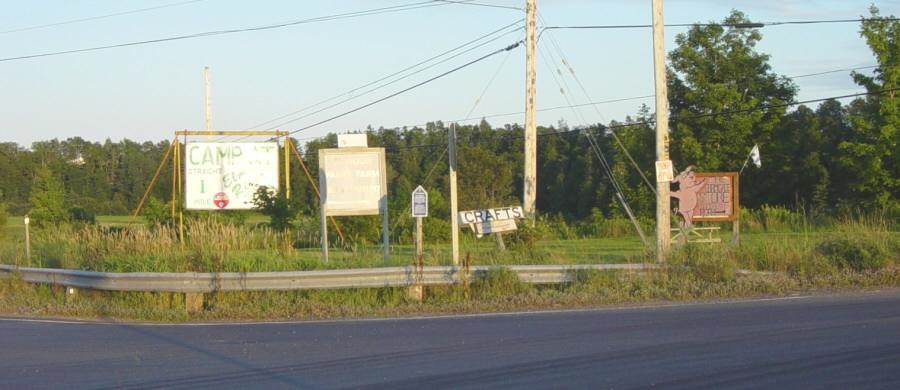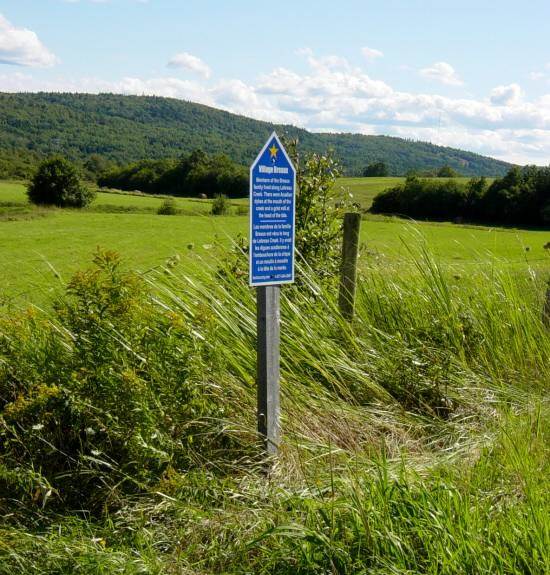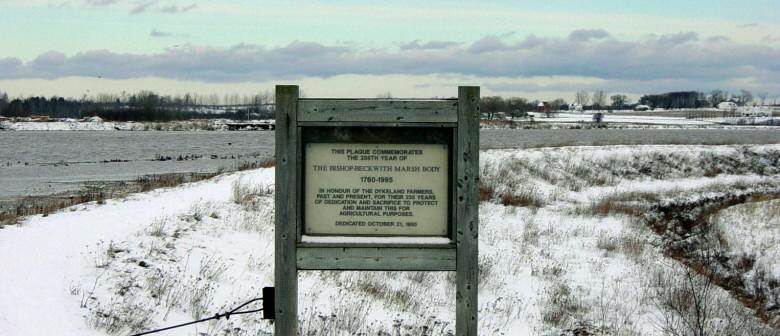
Bishop-Beckwith Marsh Body
235 years 1760 – 1995
Photographs of Plaque
Port Williams Kings County Nova Scotia
Located on the east side of Highway 358
at the Cornwallis River bridge, Port Williams
GPS location: 45°05’40″N 64°24’22″W
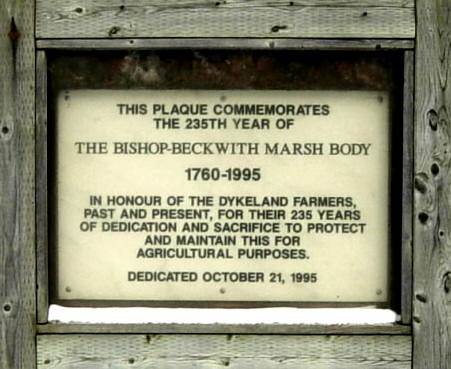
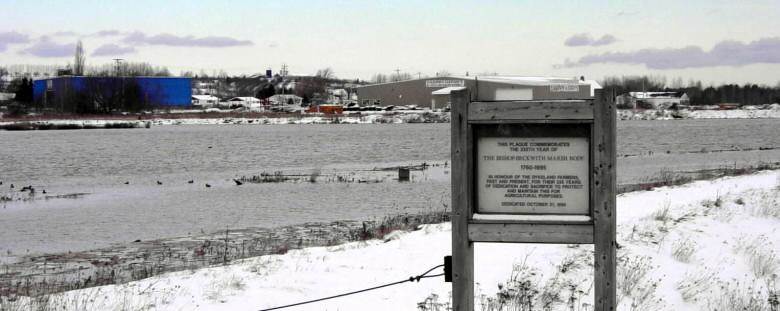
Photographed fifteen minutes before high tide, on 5 December 2002.

5 December 2002, fifteen minutes before high tide.
The Cornwallis River water suface stands more than two metres above
the farm field seen on the right-hand side of the photograph.
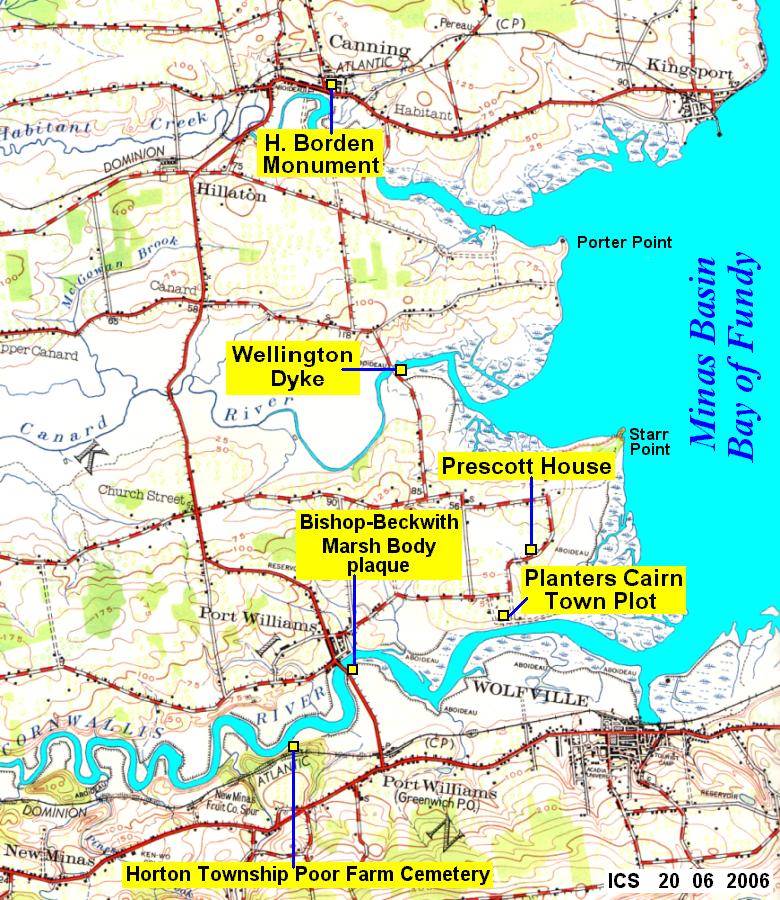
Map showing the location of the plaque
Bishop-Beckwith Marsh Body 1760-1995
Kings County, Nova Scotia
Roads are shown as they were in 1956.
Except for the Greenwich Connector to Highway 101,
the layout of the roads in 2006 has not changed
much from that shown here.
Halifax, Tuesday, February 25, 1997
Legislature Standing Committee on Resources
Mr. Laurence Nason
CEO of the Nova Scotia Federation of Agriculture:
…The next issue that we would like to talk about is the protection of marshlands and here we want to focus on one particular case, and that is the Bishop-Beckwith Marsh that is behind the Town of Wolfville.
Basically there is a group of farmers, who are landowners on that marsh, who have been forced to go as far as the Supreme Court to protect that particular bit of land for agricultural use. That land is part of what is classified as one of the three best agricultural areas in Canada and we think it is a ridiculous situation when a group of farmers have to go to court, at their own expense, to protect land for agricultural use.
What they are protecting it from is the Town of Wolfville, that would prefer to develop that, zone it commercial, and develop a shopping centre complex out on the marsh. We think that is unacceptable and it is a situation that can be corrected very easily with legislation.
There are legislative and regulatory solutions that can correct that situation and other situations that are bound to arise in the future in marshlands in Nova Scotia. We are at a loss to know why someone hasn’t realized that and taken the steps to protect that particular land. We realize it takes a bit of intestinal fortitude to tell urban municipalities that they can’t willy-nilly develop on agricultural land, but we think it is time that somebody started to do that or we are going to lose that particular marsh and probably more of the marsh around the Truro area and other marshes in the Grand Pre area and in Annapolis County…
Mr. Anthony Van Oosten
First Vice-President, Nova Scotia Federation of Agriculture:
…We don’t make agricultural land anymore. Idon’t know how you are going to protect it. There must be a way you can do it…
Mr. Keith Colwell: What about the problem with the municipalities? They have more control over zonings and what the land can be used for. How can that be addressed with the municipalities individually? Ihave heard several times in your conversation you are quite concerned about how the municipalities in general work with the – or lack of work – farming industry.
Mr. Nason: Well, Ithink your chairman would probably agree with me. Municipalities look at land as revenue. It is real property. It is something you can tax. The highest value returns the highest tax so naturally the Town of Wolfville would look at the marsh that is within their town boundaries as being a better resource for their tax system with a shopping centre on it than it is left in agriculture land. There is tax revenue there for them. Iwas involved in local government, that is how Iviewed land…
Source:
http://www.gov.ns.ca/legislature/hansard/comm/r/r970225.htm
Planter 2010 Celebration in Nova Scotia
References:
Bishop-Beckwith Marsh Body Land Use Regulations
http://www.gov.ns.ca/just/regulations/regs/mrcbishp.htm
Bishop-Beckwith Marsh Body Land Use Regulations
http://www.gov.ns.ca/just/regulations/regs/amcbishp.htm

